
|   |

|   |
Kutiyattam artistes in Japan to understand the essence of Noh theatre March 23, 2012 Outwardly at least there are differences between the centuries old Kutiyattam theatre of Kerala and the ancient Japanese Noh theatre. But there are many commonalities in these art forms in its internal structure and thought processes. It is for this reason that comparatists among theatre lovers find this a very interesting area. Recently as part of the joint Noh and Kutiyattam Cultural Exchange Project organised this January by the Japan based Tokyo University of the Arts and Irinjalakuda based Natanakairali Research and Performing Centre for Traditional Arts, the five member Japanese team led by the renowned Noh Master Kanze Shimizu Kanji visited Natanakairali to watch Kutiyattam and had detailed discussions with Kutiyattam artistes. As part of the second phase of this project, the Kutiyattam maestro Venu G and artiste Kapila were in Japan from March 4 to 10. Normally such cultural exchange programmes are organised only at an academic level, but it is a project that has the active participation of performers in it. 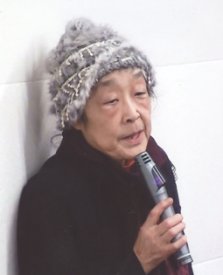 Prof. Kazue Kobata  Tomoe Tara Irino At the conference of Japanese and Indian artistes and art lovers on March 6 at the Indian Embassy hall in Tokyo, Prof. Kazue Kobata from the Inter-Media Art Department, Tokyo National University of the Arts, welcomed the audience. It is essential for our times to compare Noh and Kutiyattam and these art forms quintessentially embody the cultural comprehensiveness of these two diverse cultures, observed Prof. Kobata. This was followed by a presentation of video clippings on Kutiyattam and lectures by Tomoe Tara Irino who had trained in Natanakairali for over a decade in this theatre. Then Venu G and his daughter Kapila Venu gave lec-dems on the traditional training in acting in Kerala with its emphasis on the arousal of the five senses to realise the nine rasas. In enacting the nine rasas, Kapila presented the incarnation of Narasimha to present Roudra (anger) and for Bhaya (fear) presented Kamsa who hides in the tower with the doors shut fearing Krishna. 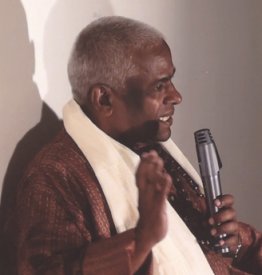 Venu G 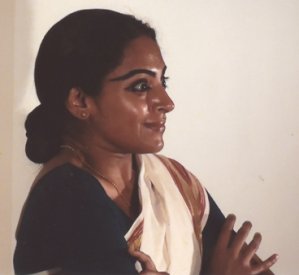 Kapila Venu On March 8, there were rehearsals at the Tessen – Kai Noh Theatre of three Noh plays namely Kuzu, Hachiku Renga and Jinen Koji and the Indian contingent watched the presentation of these plays at the Hosho Noh Theatre in Suidobashi. The story of Jinen Koji is about a girl who sells herself so that she can perform the last rites for her father and mother killed in an accident. Hachiku Renga tells the story of the lender who comes in search of the borrower and the way the borrower through a series of lies gets the agreement he had written in the first place. This play which has a lot of humour belongs to the humour plays in the Kyogan Noh category. Kuzu narrates the story of how Emperor Temmu is rescued by a fisherman and his wife when violence was unleashed. The acting in Noh theatre is highly stylized. Men perform the role of women. When the mask of the female character is worn, there is no imitative impulse in the characterization on stage. The actors speak without changing their voice. The external gestures completely steer away from realism in Noh theatre. 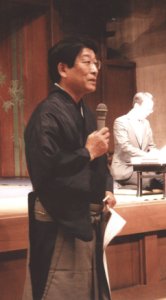 Kanze Shimisu Kanji 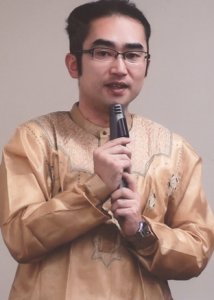 Hiroshi Maruyama Prof. Omote Kiyoshi delivered a lecture on Zeami Motokiyo (1363 – 1443) who is considered to be the founder of Noh theatre. Zeami not only did write many Noh plays that laid the foundation for this theatre but also wrote and preserved the acting manual for their production. Fushikaden, which is the acting schema he shaped based on knowledge he acquired from his predecessors commingled with his own experience and creativity, continues to unshakeably sustain Noh even today. It is possible to see the influence of Buddhist and Shintoist thought in his aesthetic philosophy. Shimuzu Kanji opined that it was his visit to India that motivated him to understand in greater depth, Zeami’s concept of art. After his lecture at the Tessein Kai Noh, Kapila performed at the Noh theatre, the death scene of Putana in Kutiyattam. The otherwise orthodox Noh artistes who do not permit performances of other art forms inside Noh theatre, were only happy to allow Kapila perform there. It was because they fully understood and internalised the importance of Kutiyattam that they gave their assent. Led by Venu G, there was a workshop as a prefatory to the ‘Navarasa Sadhana’ at the JML Seminar Institute, Tokyo, on 7th and 10th March. 17 Japanese artistes participated in it. Hiroshi Maruyama, Abdur Rahman, Chie Kamino, Emi Okada, Nao Nishihara, and Yuri Kitaya worked a lot to make this cultural exchange fruitful and successful. |